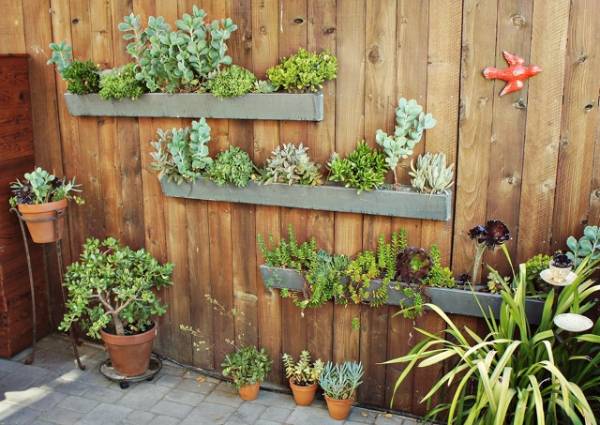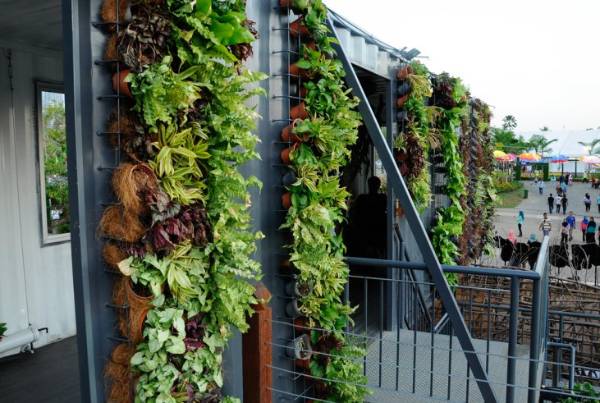
Space Saving Vegetable Garden Ideas: Things To Consider
Even the smallest space can be transformed into a productive patch of land by using small vegetable garden ideas. Any type of crop, from tactile herbs to root vegetables and fruit trees, can be grown with careful planning.
You can sate your desire for recently picked produce as long as you can locate a sunny area, whether it be on the ground or in the air. In this article, we introduce 18 great ideas of space saving vegetable garden and things to consider when you want to plant vegetables in your small garden.
Layout Considerations
Vegetable gardens of all sizes and shapes can produce good yields, but the layout of your garden is most important in ensuring that your plants can get the right nutrients.
Consider a few fundamental factors when deciding where to place your garden beds or containers.
Select a location that can offer sufficient sunlight, easy access to a water source, and rich, fertile soil to grow healthy vegetables in order to make the most of a small vegetable garden.
Sun
Ideally, vegetables should receive six to eight hours of direct sunlight daily. Fruits won’t ripen and plants will become stressed without sun. There are a few vegetables that can grow in light shade, including lettuce and other leafy greens, root vegetables, broccoli, and cole crops, even if the location lacks adequate sunlight.
Water
Watering vegetables regularly is necessary. They won’t fill out the form if that happens. Some, like tomatoes, can suddenly burst open if given water after a period of struggling without it. If you have the resources, a drip irrigation system is easy to set up and conserves water by watering the plant’s roots directly (losing less water to evaporation). A sprinkler system that wets the foliage can make plants susceptible to blights and mildews, so even a straightforward soaker hose is preferable to it.
Soil
All plants require fertile soil to grow, but vegetables require it even more because the soil’s quality affects how they taste. Vegetables require soil rich in organic matter. The quality of the soil is the reason why wines made from the same grape variety can differ from one region to the next and why some regions produce hotter peppers than others.
Space Saving Vegetable Garden Ideas
Raised Beds
The presentation of your backyard vegetable garden in raised beds is stylish. You could grow various kinds of vegetables in each planter while maintaining a functional aesthetic of cleanliness and landscaping.

Fancy Plant
Vegetable gardens are useful in many ways, but they are frequently viewed as quite ugly and untidy, and as a result, they are rarely found in yards that are kept immaculately. This doesn’t have to be the case, as is demonstrated in this yard were clearly defined vegetable garden beds sit on a well-kept lawn.
Yard Sale Pots
Vegetables grow best in pots and planters, and you can use the containers you already have laying around your garage or garden shed. Yard sales are another place to find a variety of pots, as a collection of aging, mismatched pots with growing vegetables will go well with the current rustic fashion.
Divide And Conquer
Instead of having multiple vegetable beds, which would require more space and work to set up, this is a more doable option. The vegetable divider is an easy and affordable way to keep various vegetable varieties apart.
Edible Landscaping
What a clever concept for a small vegetable garden. Use leaf lettuce or curly parsley to make an edible border at the front of a flower bed; tuck pepper, tomato, or broccoli seedlings between your favorite perennials; or grow pole beans and cucumbers on a trellis or arbor.
Skip Vegetables That Take Up A Lot Of Room
I adore growing pumpkins, melons, and corn, but the plants require a lot of space, take three to four months to mature, and don’t yield a lot of produce to warrant taking up so much garden space.
Avoid vining varieties and opt instead for bush or dwarf varieties, such as the compact, orderly-growing “Butterbaby” butternut squash, if you don’t have a large garden but still want to grow crops like pumpkins or winter squash.
Choosing The Right Small Vegetable Garden Crops
Vegetable gardens in small spaces can benefit from a number of strategies that will increase their productivity and success. Start by picking varieties that have been bred to be small and container-friendly. When flipping through seed catalogs or shopping for seedlings at your local nursery, look for descriptions like “bush,” “dwarf” and “patio.”
Think Smart
Make the most of the space you have at your disposal in a small garden by choosing vegetables that can serve multiple purposes.
For instance, lettuce is not only scrumptious but also attractive, productive, and healthy. Or pole beans can be trained on corn to grow. To stay organized and make the most of your space, make a plan for what you want to grow in each season.
Hanging Planters
You can keep various vegetable varieties separate by using hanging planters, which is advantageous to the plants themselves. However, it will also make your life simpler if the frequency and volume of watering that various vegetables require to vary.
Planter Party
Since root vegetables need more room to grow, these deep planters are ideal. You won’t have to spend all day on your knees taking care of your plants’ needs thanks to their height as well.
Planting Table
Vegetables can be grown successfully on planting tables without taking up valuable floor space, despite the fact that they are typically quite expensive. The only drawback is that because planting tables tend to be quite shallow, they are not suitable for growing vegetables, which need a lot of growing space beneath the soil.
However, you can buy planting tables in a variety of sizes to fit the space you have.
Green Roof
Rooftops with easy access are great places to grow flowers, herbs, and vegetables. Vegetables benefit from the most sunlight possible because of their relative height to other buildings and trees.
As a result, they rarely experience shadows throughout the day. Additionally, they effectively use any rainwater that falls.
Green Wall
When trying to create a vegetable garden in a small space, wall planters provide a solution. Produce growing spaces can be created by simply screwing or hanging wooden or metal planters from the wall.
Vertical Gardening
Growing plants and vegetables have become more popular among younger generations, who frequently reside in apartment buildings or have very little outdoor space, and vertical gardening has exploded in popularity over the past few years.
Hanging Baskets
Although they are often associated with blooming flowers, hanging baskets are actually a great container for growing food, especially herbs, which don’t need as much space as vegetables do.
You could grow herbs in hanging baskets in your backyard or on your balcony to go with the vegetables you have growing elsewhere.
Through The Window
The ability to grow your own vegetables in a window box demonstrates that you don’t need any outdoor space at all. Produce can be grown entirely indoors as long as it is put in a spot with lots of sunlight, like a windowsill.
One-pot Wonder
If this is your first time starting a vegetable garden, you might want to start out small rather than going all out at once. You don’t need many pots to grow your own food.
Once you get used to the level of maintenance required, you can decide whether to expand with additional pots or stick with your one-pot project.
Veg Edge
Simply add nutrient-rich soil to a particular area of your garden and enclose it with a low-height edging strip to create your own vegetable plot.
This option has the advantages of allowing you to completely customize the size and shape of your vegetable garden and requiring very little time, effort, and money before you can start digging in and planting your vegetables.


